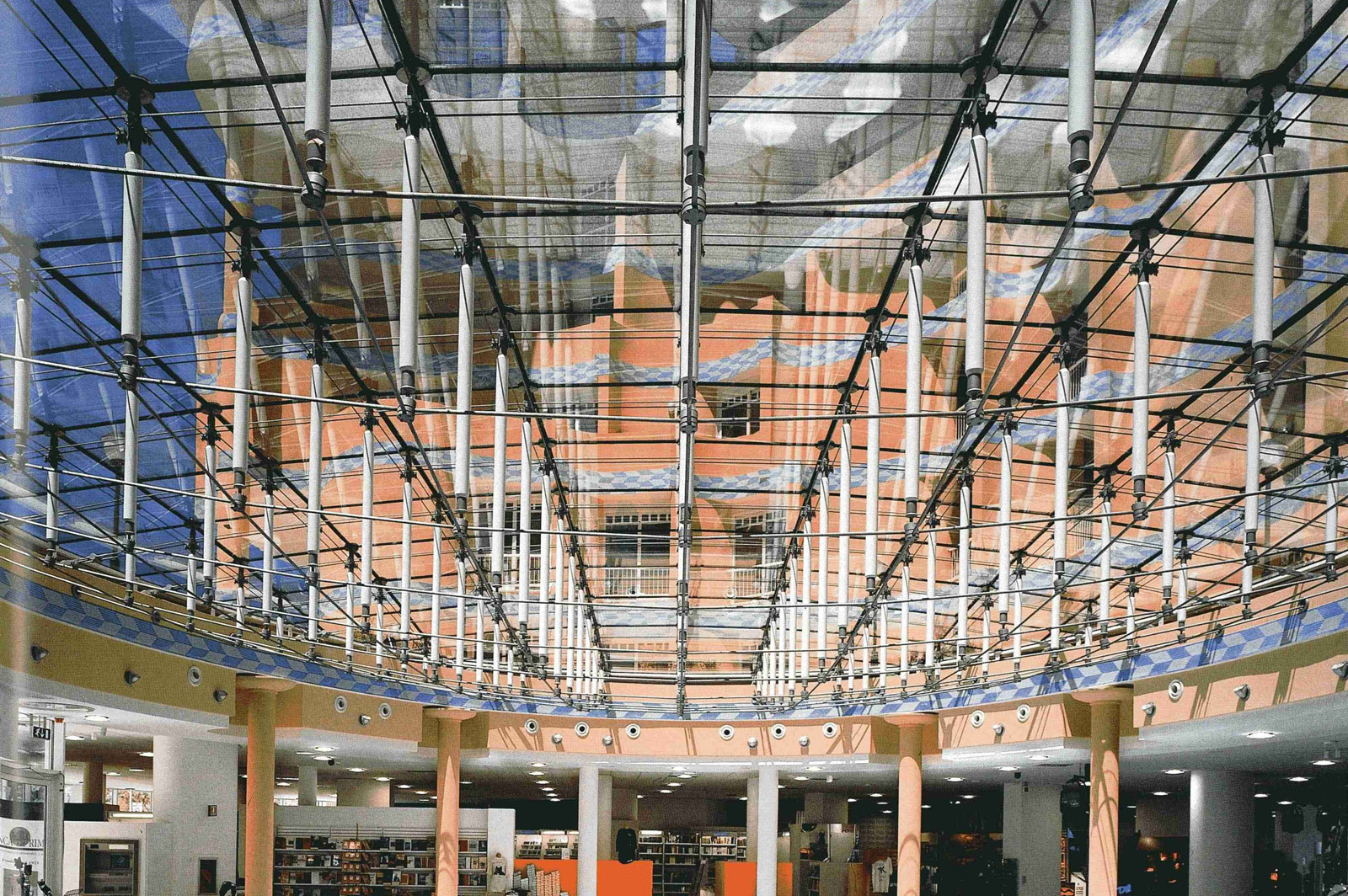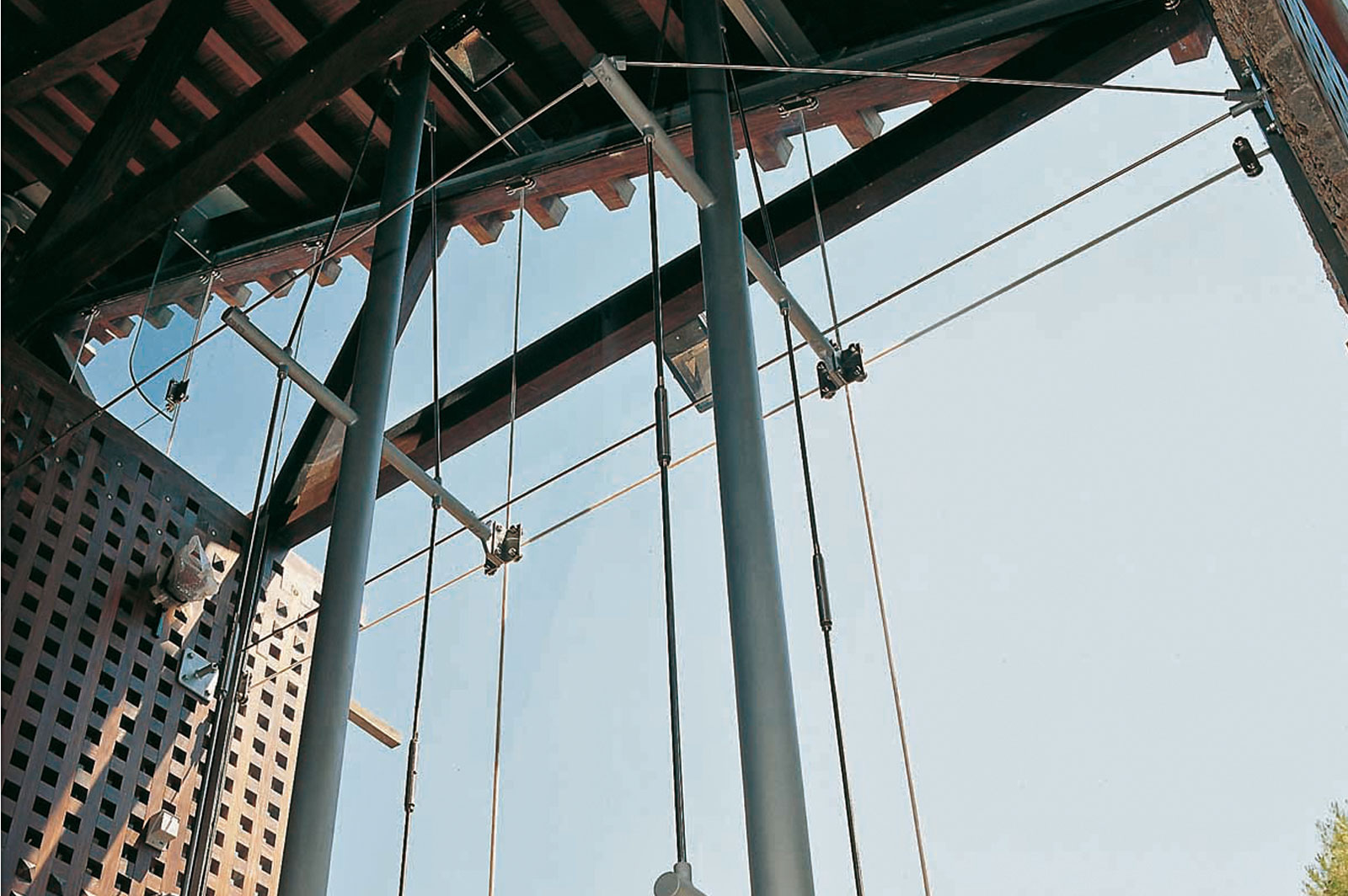
Hotel Savoja – Rimini (Italy)
4 May 2019
Museo del Duomo di Monreale (Italy)
4 May 2019Client:
Bolzen Autonomous Province
Architect:
KSV - Krüger Schubert Vandreike, Berlino
Customer:
Vega Systems srl, Padernello di Paese (TV)
Developer:
Athesis soc. cons. a RL, Pozzuolo del Friuli (UD)
Two counterpoised facades in glass-double-wall and in a spilled pyramid form, highlight the clearness and the largeness of the Museion’s architecture. It’s the new museum of modern and contemporary art, sited in Bolzen (Italy).
The glasses of the external skin, are supported by a network of polygonal and alleged cables (27 metres long), with cusps positioned on each corner of the reversed pyramid’s sides; the intersections in the summits of the 3 glass sides (where the cusp corners in 5 cables and an union of 5 glass slabs are formed) are points of a great technology; the geometric stability is guaranteed by the articulated struts that unite each point of the external skin with the bearing structures sited on the external levels’ skin.
For the stratified glasses of the double-glass external facades, it has used a strong and durable structural interlay, named SentryGlas®; it is known for its ability in the creation of highly resilient and stratified glasses, and for its elevated performances in the case of post-breakup.
These properties made possible the use of a quite thick glass, in a building 25 metres high. Also the glass sections sited in the superior part of the museum, are made using the strict security’s requisites, and they need just small and discreet fasteners’ points, for guaranteeing the panels stability, also in case of strong winds.
The SentryGlas® interlay is more resistant and about 100 times rigid than the PVB glass.
The load’s transmission between the stratified glass slabs is perfect, also during high temperature, with performances as similar as the monolithic glass.
This property explains the excellent resistance to the stratified glass flection under a load, or in high temperatures for the direct light of the summer’s sun.
In case of same loads, the stratified glasses in SentryGlas®, show a resistance (in decline cases) twice superior than the stratified PVB glasses; with performances similar to the monolithic glass with the same thickness.
Other benefits are the high transparency, the excellent resistance against the yellowing and the board’s stability.
A stratified glass (made by a tempered glass layer 12 millimetres thick; an interlay 1,52 millimetres thick; and an hardened glass layer 12 millimetres thick) has been chosen for the bottom’s perpendicular sections.
For the suspended sections, it has used a stratified glass made by 2 hardened glass layers 12 millimetres thick, and an interlay 1,52 millimetres thick.
The use of a traditional stratified glass, realized with a PVB interlayer, could require an increased thickness for giving a long-term resistance and for satisfying the norms about the wind solicitations. Other than that, the big dimensions of each panel (about 1,75 metres large and about 2,40 metres high) could need a quite expensive structure for the support, with the necessity of the use of very big fastener’s points against the panel’s weight and against the wind’s strength. Because the small load of the external façade, it is necessary just the use of small fastener’s points, to keep the structure in a state of security.
The double-façade (that forms the iconic transparent entry and the curtain wall of the museum) allows a better acoustic and thermal control.
The space in the double-façade forms a real climatic crawl space. The internal air, circulates between the roof and the mechanical equipment in the basement, this can promote the control of the temperatures and it can increase the energy’s performance.
The blind systems in opaque glass, are integrated in the same crawl space, and they are used for modulating the natural light’s entry in the building, also promoting the best showing of the exposed artworks, in respect of their properties.
The manoeuvrable blind systems in opaque glass, integrated in the crawl space, modulate the daily light’s entry; while in the darkness, they transform the façade in some giant screens for the use of the headlamps installed in several parts of the museum.
The Museion is not just an “artworks box” but also an artistic, international and interdisciplinary lab.
A metallic shell is of the lateral side of the building, in a cube form. For contrast, the 2 main facades transform in big transparent windows in front of the city and in front of the surrounding landscape.
The forward façade makes possible seeing the internal museum from the outside.







